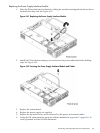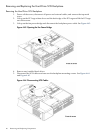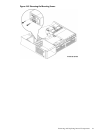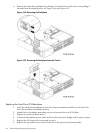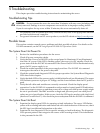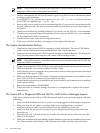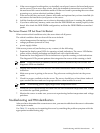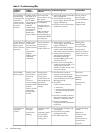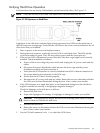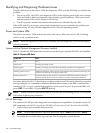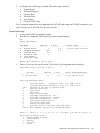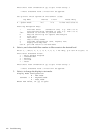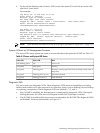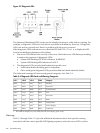
6. If the server stopped working after you installed a new board, remove the board and power
on the server. If your server now works, check the installation instructions received with
the new board for correct installation method. If the new board is preventing the server from
powering on, a serious electrical problem is likely.
7. If the server still does not work, remove all boards and options that you have installed (do
not remove the hard drives) and power on the server.
8. Add the boards and options one at a time to determine which one is causing the problem.
9. If you have added any memory, make sure that the DDR DIMMs are seated properly in the
board. Also check the DDR DIMM configuration, and that the DDR DIMMs are matched
quads.
The Server Powers Off but Does Not Restart
When certain critical conditions exist, the server shuts off all power.
The critical conditions that can shut off the server include:
• critical temperature fluctuations or changes
• voltage problems (external AC line)
• power supply failure
If the server powers off, and before you try a restart, do the following:
1. Examine the display panel LEDs for warning or fault indications. The server LED flashes
yellow with a warning indication and flashes red with a fault indication.
2. Examine the four diagnostic LEDs for indications of specific warning or fault indications.
The diagnostic LEDs present patterns that categorize the source of the warning or fault.
NOTE: If MP hardware is installed, the boot process is monitored by the iLO MP. The
diagnostic LEDs are disabled.
3. Display and examine the SEL and FPL for further information about warning or fault
indication.
4. Make sure power is getting to the server. Plug a known working device into the power
outlet.
5. Check for proper ventilation for the server. The server should have at least three inches of
space around the front and rear for proper airflow when installed in a rack.
NOTE: A fluctuating power supply might cause temperature issues.
6. Check the server specifications and make sure the environmental temperature and voltage
are within the specified guidelines.
7. Monitor the server to make sure you are not experiencing further temperature and voltage
problems.
Troubleshooting and FRU identification
After you have determined the current server state, you must troubleshoot the server to determine
what repair to make.
Use Table 5-1 to assist you in repairing the server by matching the problem symptom with the
appropriate troubleshooting step.
Troubleshooting and FRU identification 97



